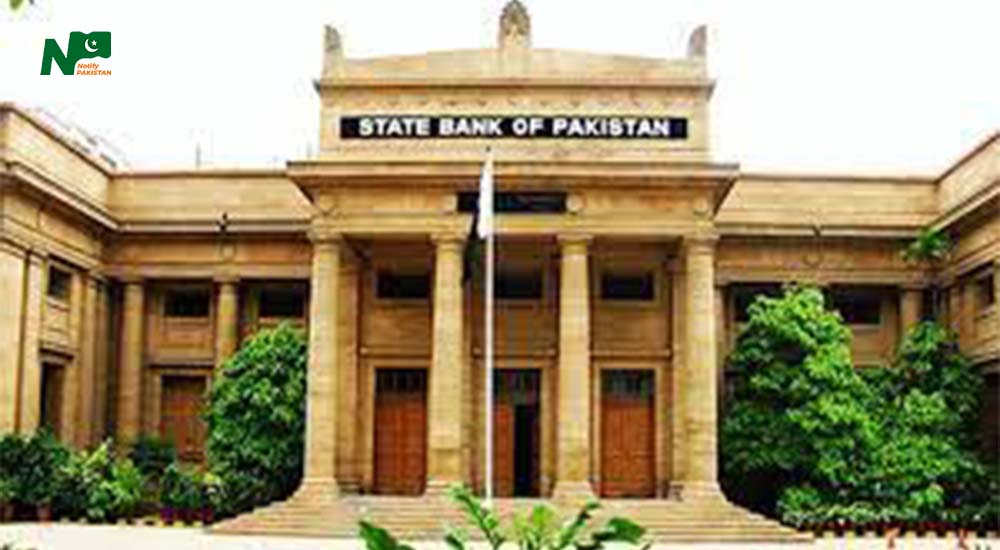The State Bank of Pakistan’s Annual Report on The State of Pakistan’s economy (FY22-23) highlights the key challenges and opportunities facing the Pakistani economy. The report also provides recommendations for addressing structural impediments and promoting sustainable economic growth.
Introduction:
The State Bank of Pakistan (SBP) has shared a yearly report on how Pakistan’s economy is doing from 2022 to 2023. The report talks about the problems Pakistan’s economy faced, like weaknesses in its structure, shocks in the supply of goods both within the country and globally, and uncertainties from outside factors.
Key Findings:
Macroeconomic Challenges:
Deterioration began in the second half of FY22 due to the Russia-Ukraine conflict, elevated global commodity prices, and unplanned fiscal expansion.
FY23 challenges included floods, delays in IMF program reviews, domestic uncertainty, and tightening global financial conditions.
Economic Performance (FY23):
The third-lowest amount of real GDP growth since FY52 was reached.
The national CPI rose to the highest level in more than 20 years.
The current account deficit narrowed, but limited foreign inflows led to a decline in SBP’s FX reserves.
Fiscal consolidation fell short due to increased interest payments, large energy subsidies, and lower-than-targeted tax collection.
Structural Impediments:
Highlights the importance of addressing structural impediments, including slow tax policy reforms and inefficiencies in public sector enterprises.
Anemic investment in physical and human capital, stagnant crop yields, and reliance on imported food contribute to a vulnerable current account balance.
Recommendations
Reforms for Macroeconomic Stability:
Urgent need for broad-ranging reforms to address sectoral imbalances.
Expediting tax policy reforms and implementing governance reforms in public sector enterprises are crucial for creating fiscal space.
Economic Growth and Development:
Encouraging foreign direct investment, technology transfers, and agriculture sector reforms are essential for sustainable economic growth.
Expedited reforms are necessary for absorbing new entrants in the labor market and improving social welfare.
Special Chapter: National Statistical System (NSS) Reforms
The report emphasizes the importance of factual information for evidence-based policy-making and includes a special chapter on streamlining the National Statistical System (NSS) of Pakistan, offering suggestions for reforms.
How to Check SBP Report:
SBP has released its Annual Report 2022-2023 on The State of Pakistan’s Economy.
See PR: If you want to see the short PDF of the report, click here.
Read full report: If you want to see the detail of the report, click here.
Conclusion and Future Outlook (FY24) of the Pakistan’s Economy!
Recent Developments:
- Pakistan secured a US$ 3.0 billion Stand By Arrangement (SBA) from the IMF, alleviating near-term risks to the external sector.
- Early signs of improvement, with high-frequency indicators suggesting bottoming out of economic activity from July 2023.
Future Projections (FY24):
- The SBP thinks that real GDP growth will be between 2% and 3%.
- Prospects of improvement in supply situation may bring down inflation in the range of 20.0 – 22.0 percent.
- Current account deficit projected to fall in the range of 0.5 – 1.5 percent of GDP.
Read more:
- HBFC Jobs 2023 |Apply Now | Grow Your Career in Housing Finance
- BOP Jobs 2023 | Apply Now for Golden Opportunities!
- National Accountability Bureau NAB Jobs 2023 | Apply Now
- Apply Now for PPSC Advertisement No. 21 Jobs 2023 Online | Multiple Vacancies
- PPSC Educators Jobs 2023 Announced | How to Apply, Eligibility, Vacancies, and More
- WAPDA Jobs 2023 | Apply Now for Government Opportunities
If you’re interested in more updates on scholarships, admissions, or internships, click here.

